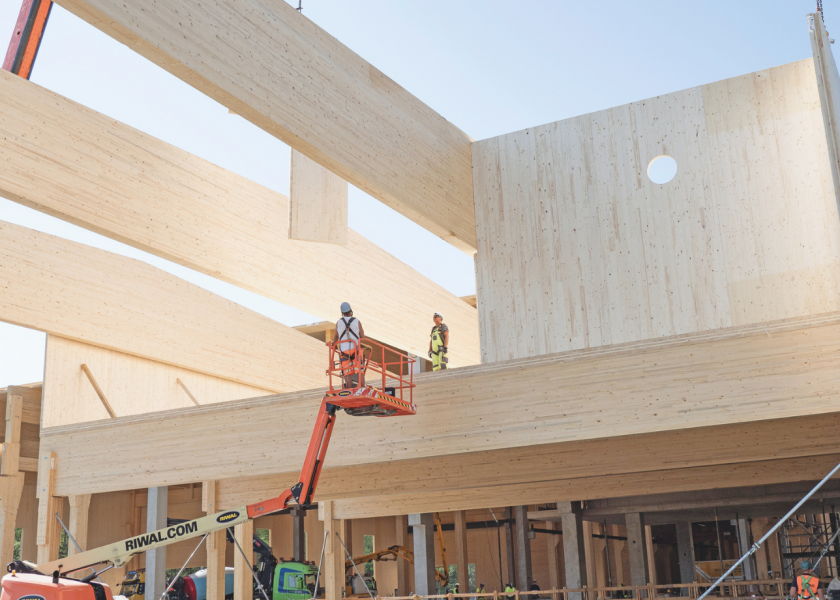Insurance industry guide to mass timber – 3. compliance
09/07/2021

The Structural Timber Association has recently published an insurance industry guide to mass timber in the UK. The purpose of this paper is to provide the reader with sufficient information to better understand the use of timber in construction from a risk management perspective.
This document has been broken down into six main sections: Management of structural timber projects, Risk management, Compliance, Structural timber and the built environment, Building Safety Bill 2020, STA technical document library. We’ll be covering each topic in turn on this website.
3. Compliance
Product testing for fire resilience is a key activity of the STA and its timber system manufacturing members. As an Association, the STA has taken the unprecedented step of completing a significant number of fire resilience tests on timber frame systems to EN 13165. Carried out by UKAS accredited laboratories, the tests provide the market with empirical data on the performance of systems, relating to buildings in use, and confirms they are all a safe building method.
The decision to test to European EN standards and not British Standards is consistent with the STA strategy to ‘raise the bar’ in terms of exceeding the regulatory requirements for performance and to build-in additional fire resilience.
The output from this programme is a series of STA Pattern Books and guidance notes to provide designers and engineers with hard data on performance-tested structural timber systems, which has been peer-reviewed by subject matter experts from the Building Research Establishment at Watford.
In addition to the STA’s fire resilience tests, a significant amount of data was gained from member’s own test programmes; the results of which will be collated in additional volumes of research data to be released early 2021.
Ongoing fire testing is still a key feature of STA activity, including comprehensive research into mass timber systems.
It is important to recognise that the structural timber market is separated into two distinct risk profiles:
· Low and medium rise buildings
· High rise and complex buildings
In both cases, the principal risks are broadly the same, but the mitigation strategies will differ. Typical examples of this relate to regulatory requirement on the preservation of life as determined by Building Regulations. Single occupancy buildings are expected to be clear of occupants within 30 minutes, whereas for multiple occupancy is 60 minutes.
In most cases, structural timber relies on non-combustible protection for fire resilience, utilising products such as plasterboard, which has been common practice for many years. More complex buildings designed to feature timber as the internal finish will require different mitigation strategies, which will be defined by specialist fire engineers.
STA members are fully conversant with the regulatory requirement for differing styles of buildings and are committed to regulatory compliance and the provision of empirical proof; including the installation of fire stopping products designed to limit the spread of fire within the building structure.
Resilience to moisture ingress and fire compartmentalisation centres around good design. In both cases and regardless of construction type, designers are specifically aware of the need to ensure buildings are designed to minimise the risk of fire spread and water damage.
Building Regulation by means of Approved Documents addresses many of the issues in a generic form, with members relying on guidance notes from STA to provide specific details for structural timber. These issues are addressed within the STA competency programme to ensure that designers and engineers are aware of their responsibility to prevent fire spread and moisture ingress.
Equally, a feature of good design is to allow remediation of a building that has suffered damage from either fire or water. Depending on the extent of the damage, sections of a well-designed building can be replaced avoiding a total loss scenario.
The Structural Timber Association’s insurance industry guide to mass timber in the UK can be downloaded here.